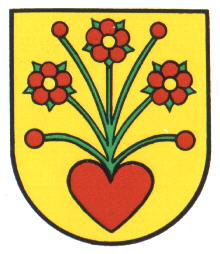Dietenhan: Difference between revisions
Knorrepoes (talk | contribs) No edit summary |
Knorrepoes (talk | contribs) No edit summary |
||
| Line 9: | Line 9: | ||
State : [[Baden-Württemberg]]<br/> | State : [[Baden-Württemberg]]<br/> | ||
District (Kreis) : [[Main- | District (Kreis) : [[Main-Tauber Kreis]] (until 1973 [[Tauberbischofsheim (kreis)|Tauberbischofsheim]])<br/> | ||
Incorporated into : 1972 [[Wertheim]] | Incorporated into : 1972 [[Wertheim]] | ||
| Line 27: | Line 27: | ||
[[Category:German Municipalities D]] | [[Category:German Municipalities D]] | ||
[[Category:Baden-Württemberg]] | [[Category:Baden-Württemberg]] | ||
[[Category:Main- | [[Category:Main-Tauber Kreis]] | ||
[[Category:Tauberbischofsheim]] | [[Category:Tauberbischofsheim]] | ||
[[Category:Granted 1920]] | [[Category:Granted 1920]] | ||
Revision as of 14:38, 28 August 2011
| Heraldry of the World Civic heraldry of Germany - Deutsche Wappen (Gemeindewappen/Kreiswappen) |
DIETENHAN
State : Baden-Württemberg
District (Kreis) : Main-Tauber Kreis (until 1973 Tauberbischofsheim)
Incorporated into : 1972 Wertheim
Origin/meaning :
The arms were officially granted on November 14, 1920.
The arms are based on the oldest known seal of the village, knwon from 1789. This seal showed the same composition as Urphar, a heart from which three roses and 4 butts grow. The meaning of this composition is not known.
In the 19th century the village used two seals, one similar to all the villages in the Amt Wertheim at the time, whowing the arms of the COunts of Wertheim. The second seal showed a crowned letter D.
In 1895 the council wanted to apply for arms based on the oldest seal, but it took until 1920 before the arms were finally granted.
Literature : Zier and Kastner, 1967

